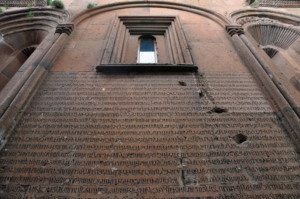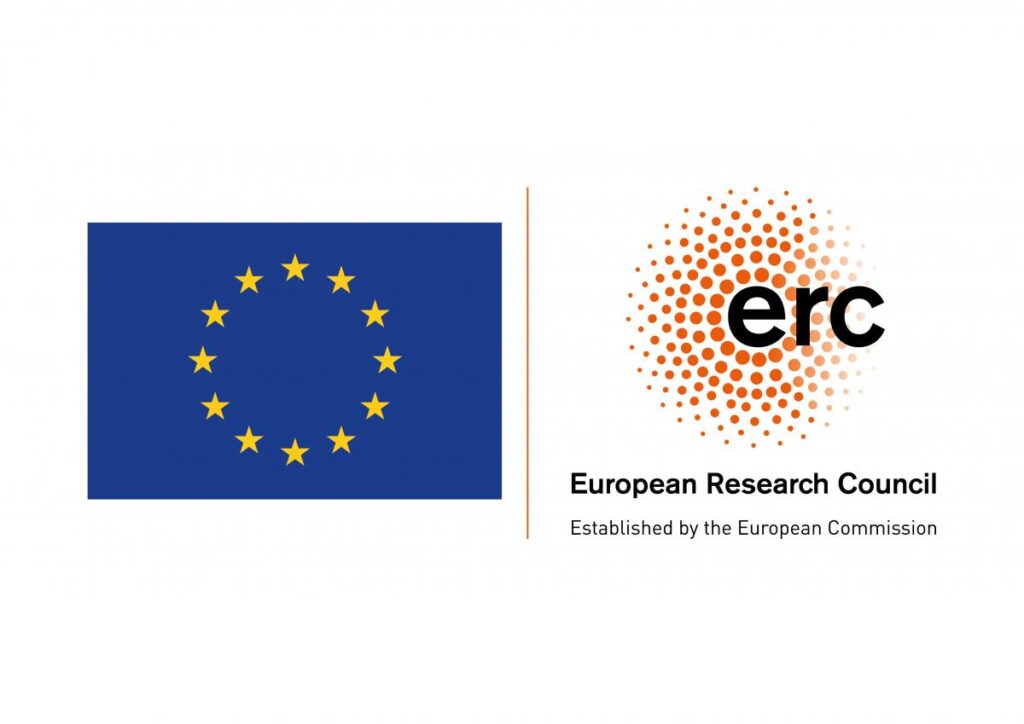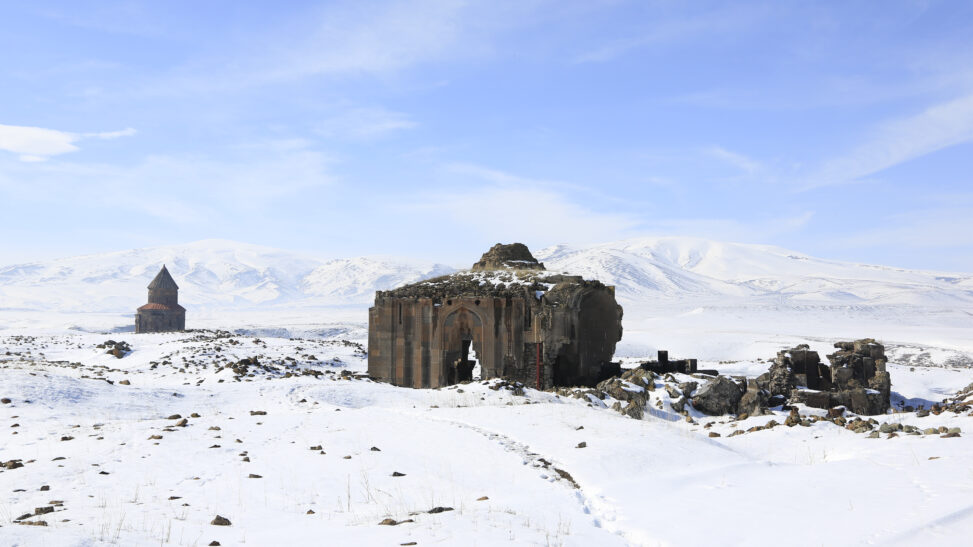This series of interviews shines a spotlight on researchers working on or with the Caliphal Finances project. Each interview showcases the variety of scholarship connected to our project’s research. Today, we are very happy to feature our colleague here at Edinburgh, Nik Matheou. Nik will be giving a lecture in our Lecture Series – IMES Seminar Spring 2025 – ‘Taxes, taxes, taxes. All the rest is bulls*it in my opinion’ on Monday 10th February, with the promising title “Crisis of accumulation in the Chinggisid world order: Land, capital and fiscal administration in Ilkhanid Ani, 1256-1335.” Read more below!
Could you briefly tell us about your background and career path?
The deepest past to my research is as a medieval obsessed child and teenager! I’m one of those oddities who always felt called to the period, starting with watching the Disney Robin Hood film again and again as a 3/4 year old – which is, of course, all about resisting unjust taxation!
More professionally I started my academic path here in Edinburgh, were I read Ancient & Medieval History as an undergraduate. My interests were generally in the edges of Latin Christendom, in the Mediterranean and the medieval empire of New Rome (Byzantium); I wrote my undergraduate dissertation on the Norman kingdom of Sicily, so a perfect mix of Latin, Greek and Islamic traditions!
For my postgraduate I started with an MPhil in Late Antique & Byzantine Studies at the University of Oxford, and got increasingly interested in the Seljuq Turkish invasions and their aftermath. I wrote my dissertation on the Greek histories of the period, and learned Armenian during my Master’s for a second regional window onto the same events, leading to my PhD on the sole eyewitness Armenian history to survive.
I was very lucky in my postgraduate studies to have some incredible peers, and they’ve been definitive for the evolution of my research interests since – on which more below!

Nik Matheou
What is your current role, and what does it involve?
My current role is Lecturer in Global Medieval History, and I also teach Marxist theory for the undergraduate and postgraduate courses in Economic & Social History. And I really couldn’t ask for more! I learned Armenian for a second window onto the empire of New Rome, but the sources started taking me here, there and everywhere in Afro-Eurasia. At the same time, I was inspired both by political developments in the 2010s and the amazing peers I met as a postgrad, as well as some brilliant scholars like Jairus Banaji, John Haldon and Chris Wickham, to start reading Marxist theory and related fields like world-system analysis. So the role is really ideal in providing lots of opportunity to teach and research both sides of my interests, thinking about longue durée Afro-Eurasian developments, and theorising them from a consistently Marxist world-systems perspective.
Can you summarise your main research areas and current projects?
I’m broadly interested in political economy over the longue durée, and most of my research touches on the problem of developing critical Marxist perspectives on pre-capitalist state systems (“pre” meant purely in a chronological sense). This puts the problem of taxation at the centre of most of what I work on: all state systems before the capitalist domination of the last two to five centuries were based on the extraction of “tribute”, whether through a form of central taxation, rents to lords or labour dues, and whether in currency or kind. A key idea I’ve been developing together with Ilya Afanasyev (Stanford) and Lorenzo Bondioli (Harvard) is that extraction in currency has the effect of driving commercialisation. This means that capital accumulation has been an essential element of a range of configurations of tributary political economy, although only very rarely has it ever become the dominant organising principle. There are clear implications for longue durée history, especially the “origins of capitalism” debate.
In terms of my empirical focus, for a few years my main project has been writing a global economic & social history of the city of Ani in central south Caucasia. Ani existed as a true urban centre for about five centuries, between 900 and 1400. The city was highly commercialised, coming to be internally dominated by a merchant elite, even as it was ruled by Christian Armenian kings, East Roman emperors, Muslim Kurdish emirs, Armeno-Georgian lords under the Georgian monarchy, and, for the last century of its existence, Mongol khans. It’s thus an ideal case study for exploring the macro story of Afro-Eurasian commercialisation across these same centuries, a phenomenon me, Ilya and Lorenzo have termed the Afro-Eurasian Commercial Revolution. The main sources for Ani’s economic & social history, and Armenian socio-economic dynamics more broadly, is the rich tradition of Armenian documentary epigraphy: monumentally inscribed legal documents, identical to the charters and documents that survive on paper and other materials elsewhere, that transform the city’s extant structures into archives in stone. For Ani there are about five hundred surviving or recorded pieces – not much compared to some parts of the world, but an embarrassment of riches for much of South-West Asia!
My particular focus for a few years now has been Ani’s Mongol period, and this has brought me into the dynamic, exciting, and very welcoming field of Chinggisid studies. It’s provided the opportunity to engage deeply with the literature on nomadic societies and political economy, and this has become another important area of my research. More broadly Armenian material in general, and Ani’s trajectory in particular, sits at the intersection of tax-based, lordship-based, and nomadic tributary political economy, so I’ve plenty to dig my teeth into!

Armenian inscription (1255) from Marmashen, Armenia, photo by Edward Zychowicz-Coghill.
What sources do you typically use in your research? What are their strengths, and what challenges do you face when using them for historical research?
As I mentioned above, the central sources I engage with are Armenian documentary inscriptions, and then to a lesser degree Armenian, Georgian, Greek and Persian literary and normative texts, and written documents in the same four languages whenever I can find them. Focusing on Armenian documentary inscriptions, these are a woefully under-utilised source in a region that’s seen an unbelievable loss of documentary material – even in Armenian studies there are no general articles or books on the phenomenon, so that they just appear cited in particular analyses of this or that phenomenon. Almost all surviving pieces are foundations of or donations to ecclesiastical institutions, since the overwhelming majority of extant medieval Armenian structures are of course churches, but in Ani we’ve a number of others on the walls recording administrative details, and, strikingly, many churches there have inscribed documents of a “public” nature – especially about taxation!
They provide the same wealth of information as documents elsewhere, including types of property, legal practices, prosopographical data, rent and tax arrangements, and so on and so forth. The key limitations are that, as donations, foundations and “public” administrative arrangements, they’re largely proxies for socio-economic processes, rather than the kinds of sales agreements, tax receipts, and legal disputes that survive elsewhere. In particular for Ani, while this is a highly commercialised city, the nature of the source material largely leaves oblique the key commodities the merchant elite traded and profited from. This means that other kinds of source become crucial for a fuller picture, including literary and normative compositions, numismatics, archaeology, and anything else I can bring in to fill out the picture.
How do fiscal theories, practices, and institutions feature in your work? How are you approaching these topics?
All three are absolutely fundamental to my work, and as I’ve said I’m very explicit about taking a Marxist perspective – although of a heterodox, strongly anarchist variety! In a sense what I want to help develop is a the kind of ‘total history’ the Annalistes saw as their project, and I think Marxism and world-systems analysis have come closest to providing the tools for this project – and of course Marxism strongly influenced Annales approaches, while world-systems analysis is a direct heir of their project, especially Braudel. Although tax and rent have long formed essential themes of debate in Marxist theory and historiography, they’ve often been hamstrung by the focus on the few instances in which Marx or Engels discussed pre-capitalist state systems, rather than draw inspiration from the one form of political economy for which they left a detailed model: capitalism. So really what I want to help develop is a ‘total history’ fundamentally framed and informed by a historical materialist paradigm that approaches tributary states and societies in the same limber, complex, and open manner that Marx and his followers have achieved for capitalism, and to do so by situating anything I research within the total development of the Afro-Eurasian world-system in the medieval millennium.
In your opinion, what is a key argument or prevailing assumption in Islamic fiscal history that needs to be challenged?
I’m not too sure about a key argument or assumption in Islamic fiscal practices as such, but I think one might be the incessant “externalisation” of the Islamicate world’s non-Muslim, and non-Arabic speaking actors and linguistic traditions. It is absolutely clear to me from comparison with a few surviving Arabic and Persian documents from, for example, Ahlat in the east of contemporary Turkey, and Ardabil in north-western Iran, that they are part of the same documentary culture, and represent the same political and economic configuration, as the Armenian inscriptions to which they are contemporary. So it follows that all three can only be understood when seen together, since the Arabic and Persian documents show more directly transactions otherwise only seen by proxy in the Armenian material, while Armenian inscriptions survive in a far greater number and so can shed light on a wider range of times and places. Islam clearly provides important frameworks and practices that span all three, and, indeed, beyond, for example in Georgian documents, but the multi-faith nature is one reason I’m a fan of Marshall Hodgson’s ‘Islamicate’ terminology.
Many thanks to Nik Matheou for sharing his thoughts and research with us! To read more of these interviews with friends of the Caliphal Finances project, click here.
You can attend Nik’s lecture “Crisis of accumulation in the Chinggisid world order: Land, capital and fiscal administration in Ilkhanid Ani, 1256-1335” either in person or online. Programme of the IMES Spring 25 Seminar and practical information can be found here. To attend online, please write to caliphalfinances@ed.ac.uk.
Banner image: Ruins of Ani (Shutterstock).




Leave a Reply